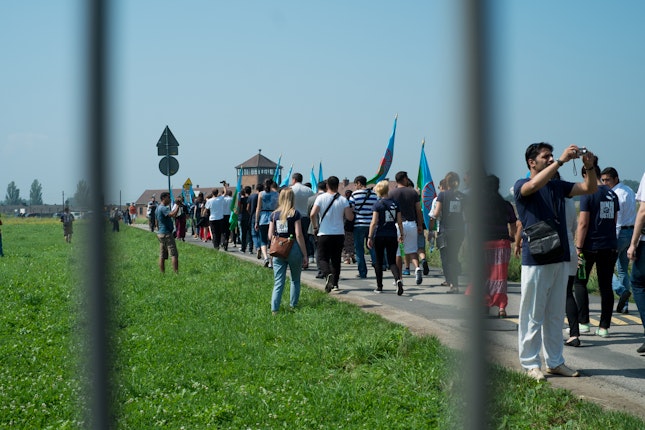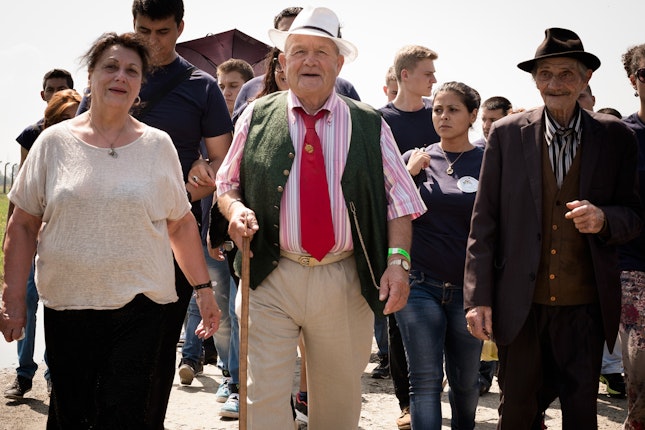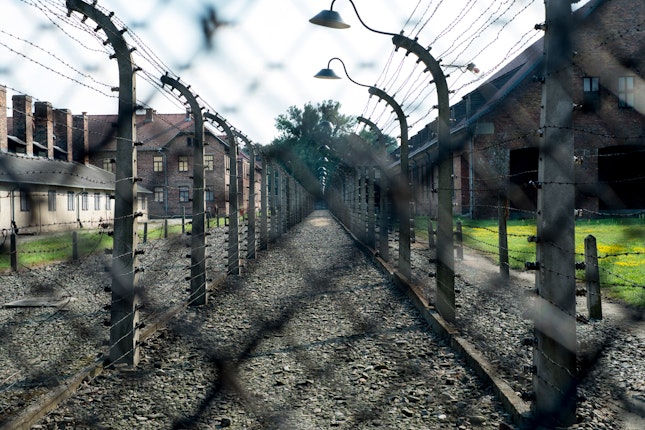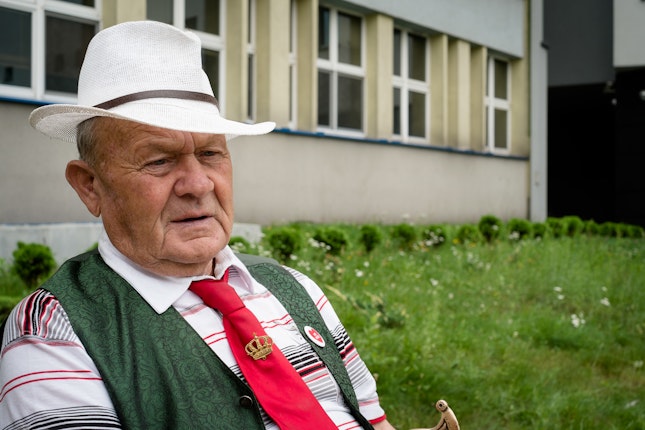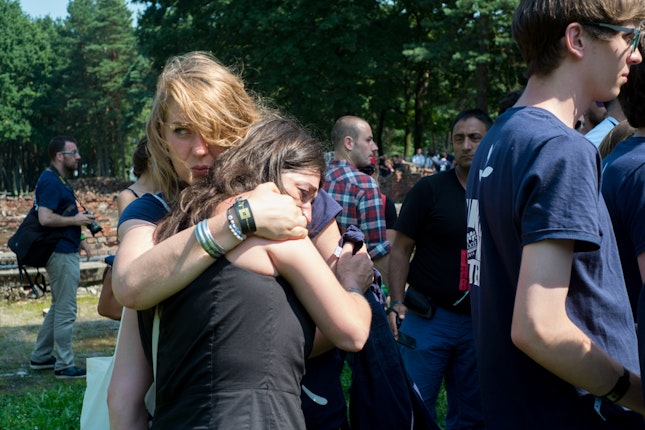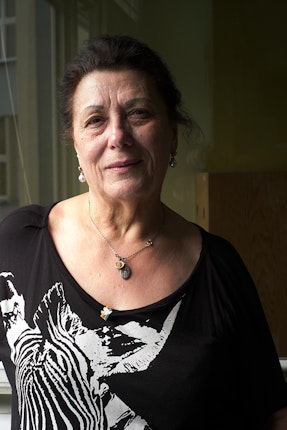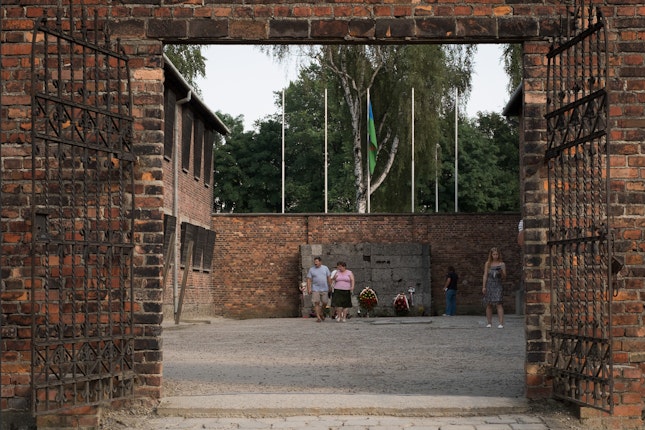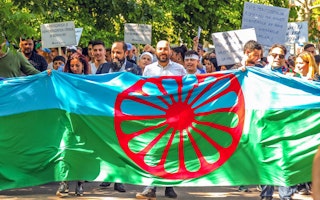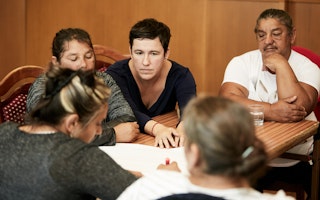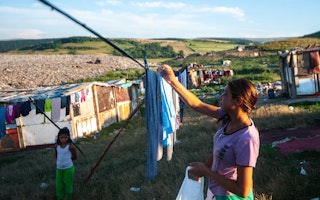Two Survivors of the Roma Genocide Share Their Stories
By Antonia Zafeiri
Between 1933 and 1945, Roma across German-occupied Europe were subjected to arbitrary confinement, forced labor, and mass killing. As many as 500,000 men, women, and children were murdered. On the 70th anniversary of the largest mass killing of Roma, on August 2, 1944, hundreds gathered at a commemoration event in Krakow and Auschwitz. I spoke with two Roma Genocide survivors, József Forgács and Rita Prigmore.
József Forgács
“My mother, father, and I were collected from our town in Zalaegerszeg, Hungary. I was only nine years old,” recalled 79-year-old József Forgács, a Roma Genocide survivor. “We were taken by train to Komárom. The train ride was a humiliating experience: crowded and cold, men and women all together with no toilet and almost no food.”
Forgács recounted his memories of deportation from Hungary and his time at a forced labor camp in Austria, where he spent eight months as a child.
The Nazis separated the crowds at the first train stop in Komárom. “The soldiers came and cut everyone’s hair so we were all bald and could not recognize each other,” Forgács said. “After a week everyone above 15 years old was taken away.”
This was the last time Forgács saw his father. A week later, on the second selection round, Forgács was taken to a labor camp in Austria alongside other Hungarian Roma, including many children. His mother stayed behind. “When we got to Komárom we were put in a big building which was for animals and we were thousands of people. All of us were Roma. It was very common to be hungry; people got diseases.”
From September 1944 to April 1945, Forgács worked at a large factory with many industrial machines. “I did not really know at the time what was happening to me; day after day I had to clean the floors of that building. They gave us food only once a day, and it was either dried bread or some soup which was more dirty water than soup.”
He cannot recall where he was held but most probably one of the labor camps in the Mauthausen concentration camp complex. “We did not meet any Jews in the camp because they were taken early. We were only Hungarians, Gypsies from Hungary.”
Forgács could not believe he was still alive when Soviet troops liberated the camp. The gates were opened and he was free. But his ordeal was not over. “We could really go wherever we wanted but we did not know where to go and what to do. We were four or five Roma children going together to find our home but every one of us was from different countries. We were just repeating the name of our countries and we tried to find the direction home.”
They walked hundreds of miles, begging for shelter and food from people speaking a strange language. They slept anywhere they could find, usually outdoors in a field. Many children died like this on the road.
When he arrived at Sopron, a city at the Hungarian-Austrian border, he knew he was home. “I was in a horrible state but I did not care. I could speak my language and I was home.” But home was nowhere to be found. When he finally reached his hometown of Zalaegerszeg, his family house had been ruined. “We really had to start again from scratch building a house from the beginning.”
Forgács stayed in Zalaegerszeg all his life, working for over 40 years in construction and as a furniture manufacturer. Despite his ordeal he still faced discrimination in later years. He received no compensation from the state because, he said, he did not spend a full year at the concentration camp.
“I am happy that so many young people want to know about my story, and I hope that they will share it with their families,” Forgács said. “We went through a lot, and this memory ought to stay behind.”
Rita Prigmore
Rita Prigmore and her twin sister Rolanda were born into a Sinti family on March 3, 1943, in Würzburg, a town in northern Bavaria in Germany. A year earlier the Nazi regime had passed a “racial law applied to Gypsies” forcing them to undergo compulsory sterilization. Those who refused to comply were deported to Auschwitz.
“In 1942, just before her appointment for sterilization by the Nazis, my mother became pregnant with me and my sister. The abortion was cancelled when the Nazis realized she was carrying twins,” Prigmore recounted. The Nazis sought twins for medical experiments.
“Dr. Josef Mengele was a ruthless twin researcher and the doctor of the “Gypsy family camp” in Auschwitz; his student, Werner Heyde, examined my mother several times.” Rita’s mother was forced to sign a paper handing her children over to the Nazis for medical studies immediately after their birth. Otherwise the entire family would be deported to Auschwitz—as were thousands of other Sinti and Roma. Four doctors in uniforms were present at Rita and her sister’s birth at Würzburg University Hospital.
When Rita’s mother returned to the hospital to see her girls, the body of Rita’s sister, Rolanda, “was lying in the bathtub with a shirt and a bandage around her head—she was dead.” Rita was only reunited with her mother in 1944 through the Red Cross.
In later years, she discovered a large scar behind her right eye; lifelong poor health including migraine headaches, fainting spells, and weak eyesight leaves her in no doubt that she was subject to experiments by the SS doctors.
Rita has committed herself to collecting evidence proving that she and her family had been victims of the Nazi regime. In 2007 she had a Stolperstein, or memorial "stumbling stone," in Würzburg dedicated to Rolanda as a Holocaust victim.
Now 70 years old, Rita travels across Germany and the world visiting schools and sharing her story. “What is important to me is to reach out to young people and show what really happened. I see it as my duty not to remain silent but to tell my story so that a new generation of young people grows up to have respect for every human being and know that any kind of prejudice can end up in a catastrophe like Auschwitz.”
When asked about her Sinti origin and the fate of Sinti and Roma today in Europe, Rita wants to look ahead. “We Gypsies do not have a country of our own and we do not strive for it. We want to be fully fledged citizens in the countries we live in and have been living for generations.”
“We Gypsies want to work, live in dignity, and have chances for education and a dignified life. My motto for the Roma Genocide Remembrance is ‘Remember the past, act in the present, and change the future.’ I am sure that living together is the future.”
Until April 2016, Antonia Zafeiri was a European communications officer at the Open Society Foundations.
